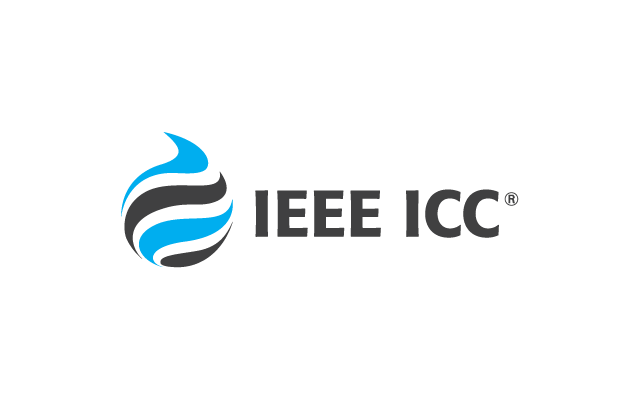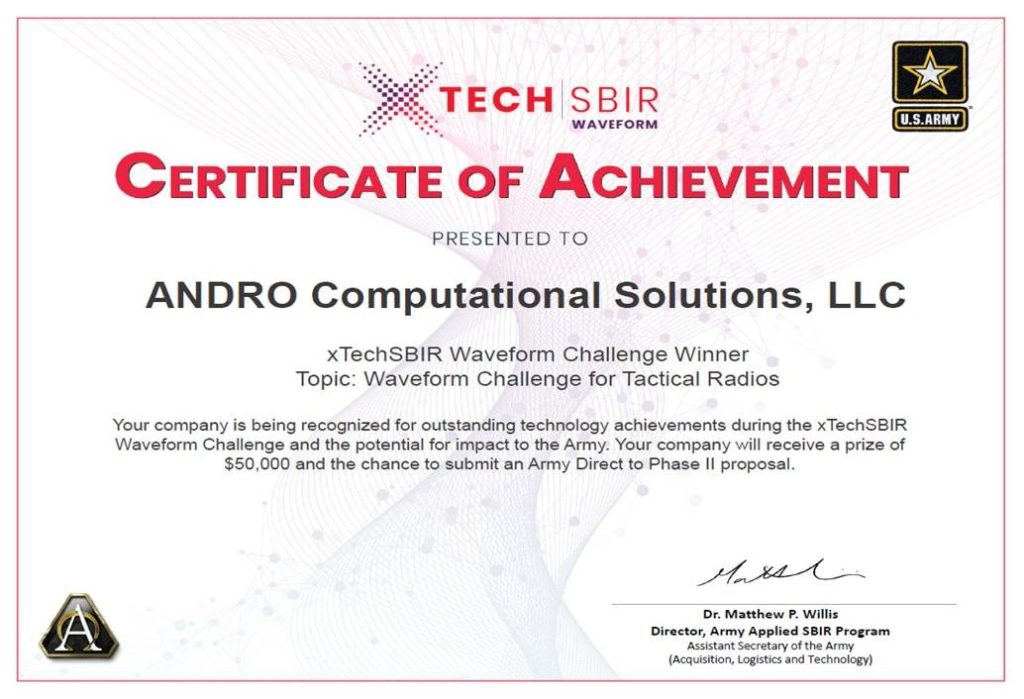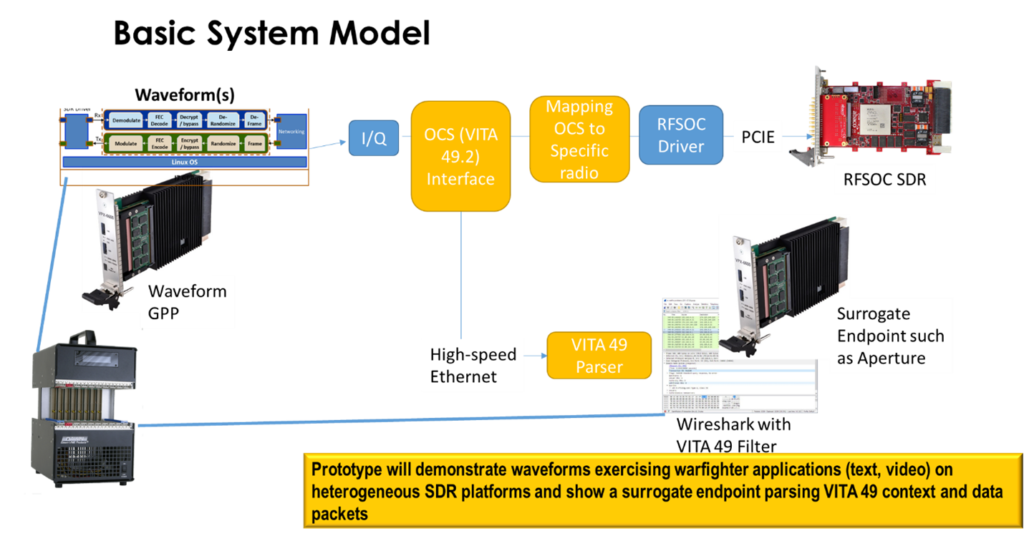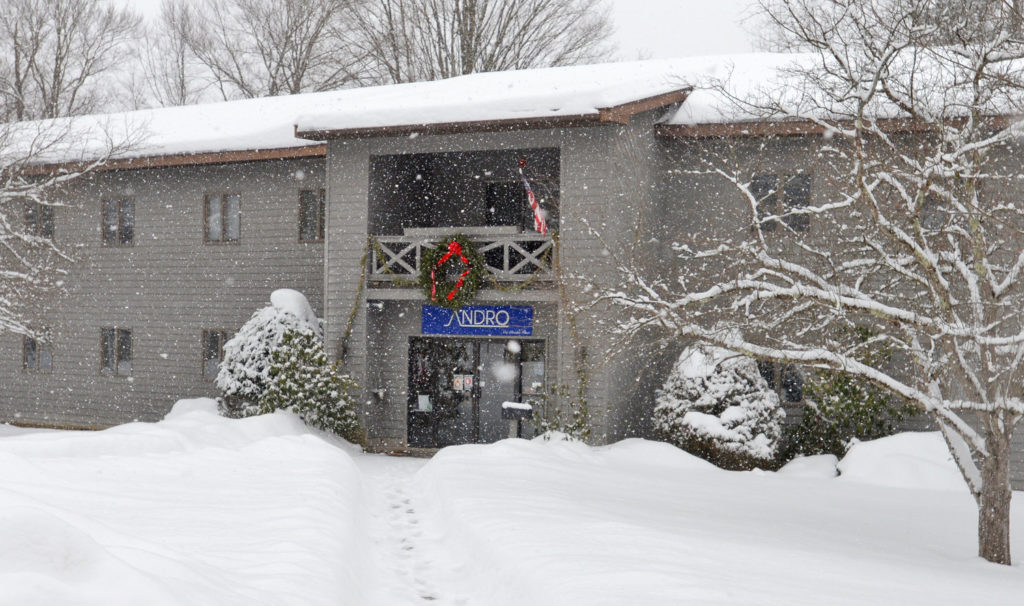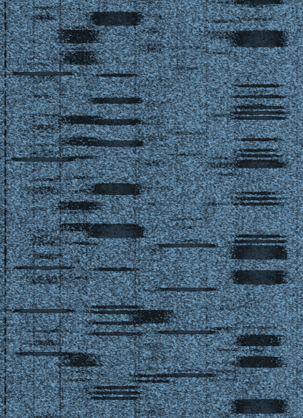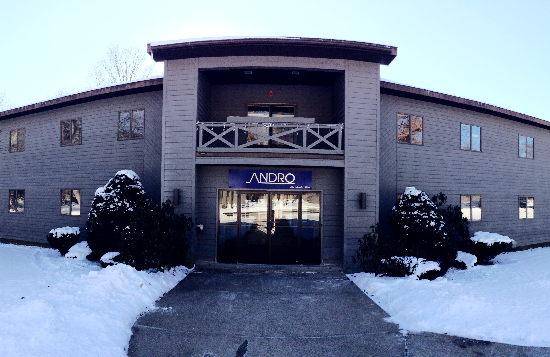Read the full story here
Corporate growth and increased employment, plus a facilities relocation and corporate restructuring, are ahead for ANDRO Computational Solutions LLC in 2021 following several accomplishments in 2020, says the Rome-based company established in 1994.
Among its 2020 achievements, the company received nearly $20 million in new research and development funding. It anticipates comparable amounts in new programs and funding in 2021, according to information from ANDRO CEO and founder Dr. Andrew Drozd.
ANDRO, based at One Beeches Place, 7980 Turin Road, provides research, engineering, and technical services to defense and commercial industries. It is dedicated to research, development and the application of advanced computer software and hardware solutions for spectrum exploitation, secure wireless communications for cognitive radios, multisensor and multi-target tracking, advanced radar data fusion, and sensor resource management.
Upcoming for 2021:
• Corporate growth — ANDRO anticipates an additional 20-30% growth compared to 2020.
• Job Growth — The company plans to expand its number of employees over the next 12-18 months by as much as 25% over 2020. It has about 60 full-time employees and interns as of the start of this year, and in 2020 experienced about 25% growth in sales and job placements over 2019.
• Facilities — Due to uncertainties regarding the future of the Beeches Park, ANDRO aims to begin a relocation plan to move its offices to a new location and build a new facility. It is seeking to purchase property and relocate outside of the park in the Rome area to further expand its radio prototyping and testing labs to accelerate commercial market pursuits.
The company said “new lab construction will support our growing communications business and needs for drone testing in natural environments including plans for quantum communications and networking testbeds.”
• Corporate Restructuring — ANDRO plans to expand into commercial markets and opportunities for smart cities including telehealth and autonomous vehicles. To accomplish this will require an expansion of its corporate executive and marketing structure to better enable new market opportunities and pursuits.
The company’s strategic plan is to grow its commercial portfolio, stand up a commercial division and explore new spinoff subsidiaries. It has completed the first phase of a Consolidated Funding Application (CFA) grant project authorized by the Empire State Development Corporation in which ANDRO invested 25% of the grant value in plant and equipment infrastructure.
During 2020:
• COVID-19 impact — ANDRO was largely unaffected by the pandemic. The company said “except for one temporary layoff, working remotely has been successful and we enter our facility on a limited, as-needed basis to conduct testing in support of our projects.”
ANDRO hired about seven new staff members during the pandemic. It applied and qualified for a substantial PPP (Paycheck Protection Program) loan but “decided to not take it as revenues and cash flow were largely unaffected as time went on.” ANDRO’s president felt other small businesses that were suffering the pandemic’s effects should receive the PPP forgiveness loans. Because of its work for the Department of Defense (DoD), ANDRO is considered an essential entity or activity.
• Community giving during the pandemic — ANDRO contributed several cash donations totaling more than $25,000 to local charitable organizations and affiliate chapters of nonprofit agencies primarily in support of COVID-19 relief to health care workers and first-responders and restaurants, for medical research, and on behalf of STEM (science technology, engineering, math) educational scholarships.
The company also supported three food drives for local area residents in cooperation with the CNY Food Bank, St. John’s Catholic Church, and the Project Fibonacci Foundation, Inc., plus it provided non-cash contributions to Jervis Library.
• Expansion — The company launched the Marconi-Rosenblatt Artificial Intelligence and Machine Learning Innovation Lab, named in honor of Guglielmo Marconi and Frank Rosenblatt, two pioneers in the fields of radio communications and artificial intelligence respectively. The new lab is headed by Dr. Jithin Jagannath and Anu Jagannath of ANDRO and falls under the company’s expansion efforts through the state’s CFA grant reimbursement program. The expansion brought six new jobs to ANDRO.
The company is planning a further expansion soon to establish a quantum communications lab and a medical technology subsidiary called AcceliPHI, expected to be announced in the coming months.
The catalyst for ANDRO’s expansion has been recent contracts to develop autonomous command and control solutions for drone applications, and realizing the potential market growth that exists.
• Public Relations and growth in international exposure — ANDRO’s work has been highlighted in major trade publications and websites devoted to broadband communications. The company has been featured in several trade venues with international subscriberships.
• Technical accomplishments and new awards — Citing the nearly $20 million in new research and development funding it received, ANDRO outlined its most notable awards.
— Launching a new platform aimed at modernizing U.S. spectrum regulatory policies and enhancing spectrum access systems, culminating a 3-year, $7 million effort funded by the DoD.
— The U.S. Navy awarding a $1.1 million contract to develop D-MARVEL machine learning-based autonomy for next-generation drones
— The Air Force awarding a $3.2 million contract to develop next-generation waveform development capabilities for advanced radio communications
— A $3 million Army contract to develop DEEPLinkTM artificial intelligent radios
— Patent approval for HELPERTM radio used in disaster relief and telemedicine adopted by Army under $3 million contract
— Winning an Army contract to develop adaptive radios for unmanned vehicle communications
— Partnering with Shared Spectrum Company in support of U.S. Army contract to enhance small UAS (unmanned aircraft systems) Communications Systems
• Professional development supported under ANDRO — Drozd received a Doctoral degree from the Ralph C. Wilson School of Education at St. John Fisher College in December 2020. He fulfilled the required course work for the Doctorate in Executive Leadership while enrolled at the college’s extension site in Syracuse, including an original research study and dissertation: On the Efficacy of Science, Technology, Engineering, and Mathematics Pedagogy in Central New York State with Implications of Instruction-based Theoretic Frameworks on Artificial Intelligence and Machine Learning.


